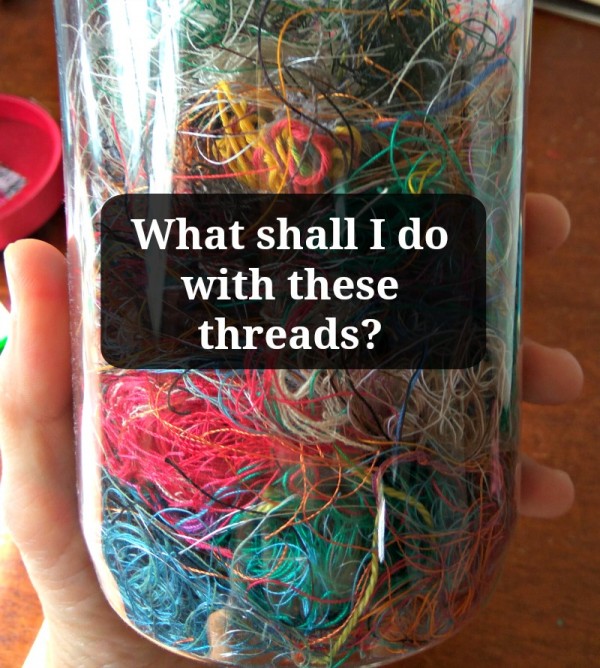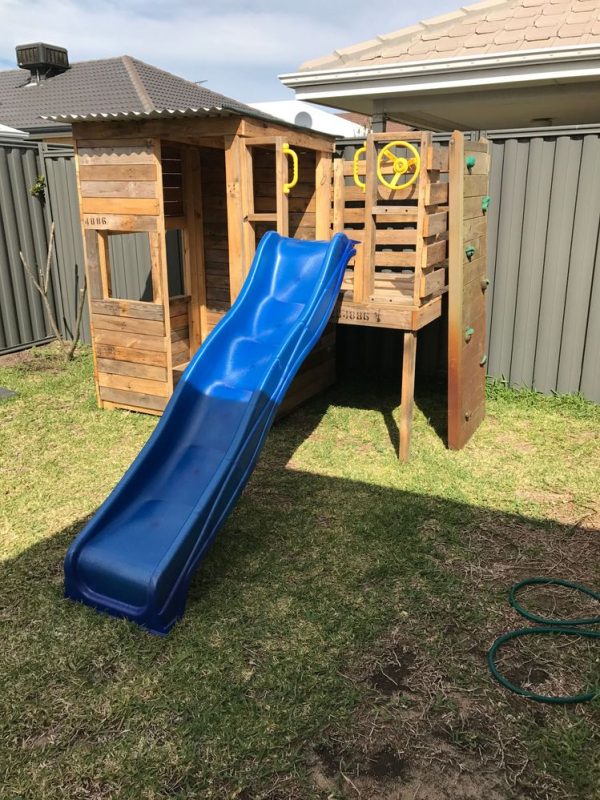 I happen to be someone who simply looks at thread and enjoys it on display. This jar is pretty all by itself. But if you would like more ideas on what to do with your scrap thread stash pop on over to the link Agatha sent in to the post at the blog Agy Textile Artist for more recycled thread projects.
I happen to be someone who simply looks at thread and enjoys it on display. This jar is pretty all by itself. But if you would like more ideas on what to do with your scrap thread stash pop on over to the link Agatha sent in to the post at the blog Agy Textile Artist for more recycled thread projects.
Comments
Have you read?
Build Big Memories on a Budget: DIY Cubby House Using Recycled Pallets

There’s something special about a cubby house. For kids, it’s more than just a backyard structure—it becomes a pirate ship, a secret hideaway, a miniature home, or a quiet spot to read and imagine. And for parents or grandparents, it’s a chance to create something meaningful that encourages outdoor play and creativity.
I recently came across a fantastic step-by-step guide from the team over at Bunnings Workshop that shows exactly how to build a DIY cubby house using recycled pallet timber. It’s a simple yet incredibly rewarding project that turns discarded timber into a charming play space your kids will absolutely love.
What I really appreciate about this project is how accessible it is. It doesn’t require a big budget or expensive materials. By using pallet timber, you not only save money but also help reduce waste—making it a great example of sustainable DIY. The cubby design is solid and safe, with a layout that leaves room for personal touches like paint, planters, or even a chalkboard wall.
This is the kind of project that can grow with your children. You might start with a basic structure and then add onto it as their play evolves—maybe a little deck area, a set of stairs, or some creative decor like a mini letterbox or curtains. It’s also a great opportunity for families to work together. Even young children can help with painting or handing over tools, making it a fun and collaborative experience.
The Bunnings Workshop tutorial provides a clear guide with a materials list, tool requirements, and helpful photos throughout. Whether you’re an experienced builder or a DIY beginner, the instructions are easy to follow and adaptable to different backyard sizes.
If you’ve been looking for a weekend project that adds charm to your outdoor space and creates long-lasting memories, this might be just the thing. Building a cubby house is a wonderful way to connect with your kids, encourage imagination, and spend time outdoors—without needing to buy another plastic playhouse.
You can explore the full project and instructions here:
DIY Cubby House Using Recycled Pallet Timber – Bunnings Workshop
If you do give it a go, I’d love to hear how it turns out. Share your cubby house photos and ideas—I know many readers would be inspired to see how each one takes on its own unique personality.
Book Review – DIY Wood Pallet Projects: 35 Rustic Modern Upcycling Ideas to Personalize Your Space
I save mine for the whole year and in the spring put the pieces out for nesting birds.
To Cindy G. about saving her threads for the year and then putting them out for the birds …. EXCELLENT IDEA! My parents taught my sisters and I to find some way to give back in some way to nature, whether it be composting, or leaving some bread crusts, nuts or carrot slices, etc., out for birds and bunnies and squirrels, and THIS just falls right in along those lines! I am SO HAPPY you posted this idea! THANK YOU ! (and why didn’t I think of that? LOL)
You can use them as “art” in lots of different ways. For example, you can spread them out like a network of “veins” on top of a sheer fabric and cover them with another sheer fabric, put some wash-away stabilizer under all of the layers (to solve the flimsy problem, if you have it), and stitch away with invisible (or any other kind of) thread in the top of your sewing machine to create a new “fabric” that is immune to losing the random threads. That “fabric” could be employed as a pocket, yoke, cuff, applique, etc. for a garment. It could get incorporated into a quilting project. It could get framed for the wall. It could get inserted in the plastic cover sleeve of a 3-ring binder for your craft idea print-outs.
I read in one of Anne MaCaffery’s that a a native group use all kinds of recycled scraps of any fabric to make the covers for quilts. They used & reused all the feathers & down, cleaned shed fur from all the livestock & wild stock. Then quilted it with all sorts thread, yarn, fishing line, old fishing nets, old sweaters,.remnants left from making clothing, & other clothing that was being recycled. It’s what became the fancy patchwork & quilted tops of today. They even used rags in rugs when too worn out to clean
with. You could latchhook a rug using not just yarn, but thread, floss, ribbon, twine, string, shreds from rags, even leftover or recycled macrame, reclaim some old sweaters or blankets. Save the old saddle blankets. These become heirlooms to be handed